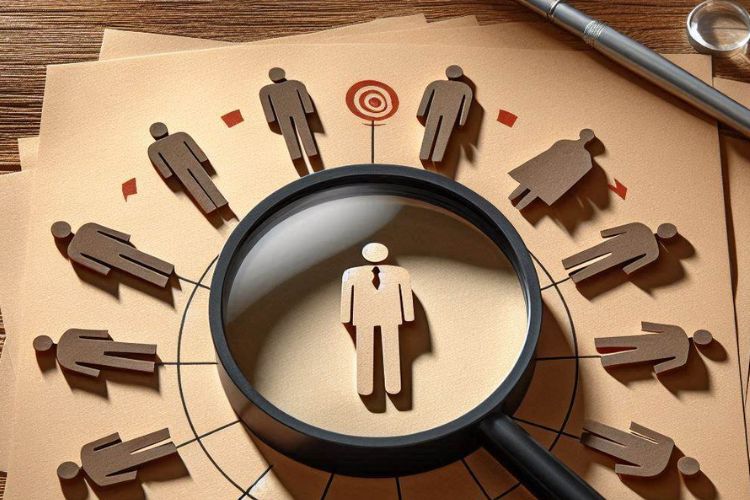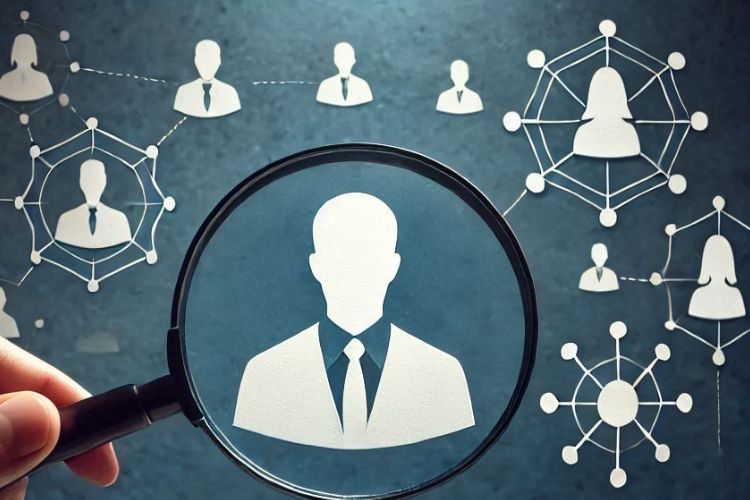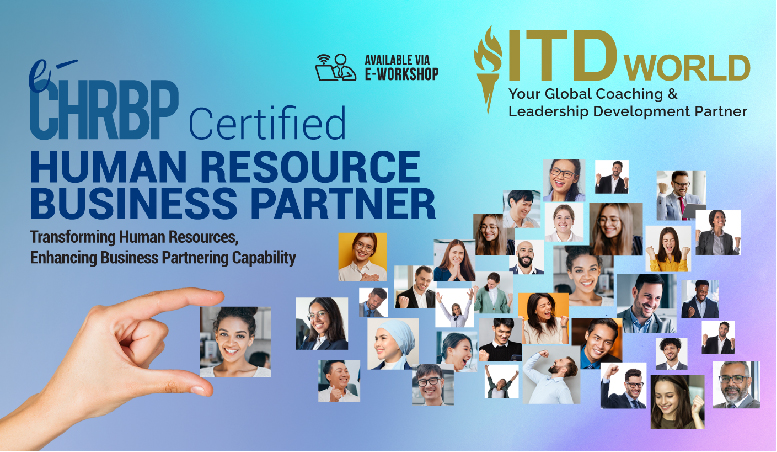Check out this analysis of the HR competency model, and uncover strategies to enhance HR practices and drive organizational success!
In response to the dynamic shifts within the contemporary business landscape, the role of human resources (HR) departments has been undergoing substantial transformation. Beyond the conventional skills, HR professionals these days are expected to demonstrate an array of competencies tailored to meet the evolving needs of organizations. At the forefront of this evolution lies the HR Competency Model, which serves as a pivotal framework for guiding HR practitioners in continually refining and adapting their skill sets to align with emerging demands.
|
Author: Jonathan M. Pham |
Highlights
- An HR competency model defines the essential skills, knowledge, and behaviors (including communication, collaboration, empathy, analysis, and problem-solving) needed for employees to succeed within an organization. It serves as a framework for HR functions like recruitment, training, and performance evaluation.
- Such a model aligns individual efforts with organizational goals, enhances HR’s understanding of its workforce, informs talent management decisions, empowers employees, drives development and growth, standardizes evaluations, and promotes succession planning and talent retention.
- HR competencies encompass core competencies (essential for all employees, like communication and teamwork), functional competencies (specific to job roles, like customer service for waiters or financial analysis for accountants), and leadership competencies (skills for leading and inspiring others, such as problem-solving, decision-making, and emotional intelligence).
- The process of establishing an HR competency framework involves research and development, analyzing the current state, consulting stakeholders, establishing a core competency system, defining job-specific competencies, cultivating leadership capacities, and refining the framework to ensure it is comprehensive and aligned with organizational needs.
What is the HR Competency Model?
Competency, in its essence, involves a fusion of skills, knowledge, abilities, and other essential attributes, often denoted as KSAOs (Knowledge, Skills, Abilities, and Other Characteristics) requisite for achieving success within a particular job, profession, or environment. Within the modern business landscape, organizations are on the lookout for a diverse spectrum of capabilities from their workforce, including:
- Communication skills: The ability to convey ideas effectively and comprehend messages with clarity.
- Respect for diversity: Embracing and valuing individual differences within a multicultural and inclusive setting.
- Collaborative work ethic: The capacity to function cohesively within teams, fostering synergy and cooperation.
- Empathy: Understanding and empathizing with the perspectives and experiences of others, so as to facilitate productive interpersonal relations.
- Analytical thinking: The ability to scrutinize information critically, extract insights, and formulate informed decisions.
- Persuasion & influencing skills: The proficiency to sway opinions and mobilize others toward shared objectives through compelling rhetoric.
- Problem-solving & decision-making: Being able to identify challenges, devise innovative solutions, and execute prudent judgments, even under pressure.
The HR competency model is a strategic instrument within the domain of Human Resources; it helps delineate the specific skills, knowledge, and behavioral requisites essential for employees to thrive within their roles/ industries/ organizations.
In terms of job performance assessment, it provides businesses with a structured blueprint to discern and evaluate both the tangible, technical proficiencies and the intangible, interpersonal attributes of employees. This comprehensive evaluation serves as the cornerstone for various facets of HR operations, including recruitment, talent acquisition, human capital management, training initiatives, and performance appraisals.

Job Description (JD) vs Competency Model
While both job descriptions (JDs) and competency models serve as essential tools for delineating the prerequisites for optimal job performance, they operate on distinct premises and offer unique perspectives on the requisite qualifications for a given role.
- Job Description (JD)
A JD’s primary function is to offer a comprehensive outline that details the fundamental responsibilities, duties, and qualifications essential for a particular position within an organization. It serves as a foundational document that encapsulates the core functions and expectations associated with the role.
Typically, a JD provides a succinct overview of the skills, qualifications, and experiences required for the job; as such, it gives prospective candidates a glimpse into the nature of the role and the competencies necessary to excel within it.
- Competency model
Conversely, an HR competency framework adopts a broader, more holistic approach toward elucidating the requisite attributes for success within a given position. While JDs tend to focus on the technical proficiencies and qualifications necessary for job performance, competency models delve deeper into the behavioral competencies and personal attributes that underpin effective performance.
Rather than merely delineating the specific tasks and qualifications associated with a role, such models delineate the behavioral expectations and proficiency levels required for success. These may involve a diverse array of skills, ranging from communication and leadership acumen to problem-solving abilities and emotional intelligence.
| Feature | Job Description (JD) |
Competency Model
|
| Focus | Responsibilities, duties, and qualifications |
Behaviors and attributes for success
|
| Perspective | Specific tasks and skills |
A broader, more holistic view
|
| Target Audience | Prospective candidates |
HR, training & development, hiring managers
|
| Content | Core functions, required skills, experience |
Behavioral expectations, proficiency levels
|
| Examples | Using software, managing projects, educational background |
Communication skills, problem-solving, leadership, teamwork
|
| Purpose | Attract qualified candidates |
Identify ideal candidate profile, develop training programs, performance evaluation
|
Benefits of the HR Competency Model
In a survey conducted by the Society for Human Resource Management (SHRM), 93% of 500 C-suite executives realized the importance of establishing an HR competency model to better manage work efficiency. Below is a summary of the various benefits that such a framework offers:
By delineating the specific competencies essential for success within each role, it serves as a guiding beacon that ensures all individual efforts and initiatives are synchronized with the broader vision and mission of the organization.
- Enhanced awareness and insight
With a specific framework in place, HR departments may gain insights into the abilities, skills, and behavioral attributes of their workforce. Armed with this comprehensive understanding, HR practitioners are better equipped to leverage the strengths of employees, identify areas for improvement, and tailor developmental interventions to meet the evolving needs of the organization.
- Informed decision-making
A competency model serves as a powerful tool for supporting data-driven decision-making processes within the realm of talent management. By facilitating a systematic analysis of employee competencies, it enables organizations to make more accurate recruitment decisions, allocate training resources judiciously, and cultivate a talent pool that is aligned with the strategic imperatives of the business.
- Empowering employees
When team members are aware of the skills and behaviors required for success within their respective roles, they become better equipped to navigate their career trajectories, acquire the necessary competencies, and contribute meaningfully to the attainment of organizational objectives.
- The catalyst for development & growth
By illuminating the skills gaps and developmental needs of employees, the model lays the groundwork for the design and implementation of targeted training programs, coaching/ mentorship initiatives, and career development pathways that nurture talent and fuel organizational growth.
- Standardized evaluation and measurement
Another benefit worth mentioning is the establishment of a standardized and objective measurement system for evaluating performance – which is crucial for ensuring fair, consistent, and transparent evaluations.
- Promotion of succession planning & talent retention
Finally, a competency model plays a pivotal role in promoting succession planning and talent retention initiatives within the organization. By increasing employee awareness of the competencies required for advancement and success, it empowers people to take ownership of their career development, thereby enhancing engagement, satisfaction, and retention rates.

Types of HR Competencies
Core competencies
Core competencies represent the fundamental capabilities that serve as the cornerstone of effective performance within any organization. These involve the essential attributes that every employee must possess, irrespective of their role or function. While the specific ones required may vary depending on the organization’s values, philosophy, and strategic goals, certain universal skills form the bedrock of core competency frameworks across diverse industries and sectors.
Among the quintessential competencies universally recognized across all organizations are communication and teamwork skills. Effective communication lies at the heart of every successful endeavor; it facilitates the seamless exchange of ideas, information, and feedback among team members and stakeholders. Likewise, a strong emphasis on teamwork underscores the collective synergy and collaborative spirit essential for achieving shared objectives and driving organizational success.
The core competencies articulated within a competency framework are intrinsically linked to the overarching goals and strategic imperatives of the organization. These serve as a manifestation of the organization’s unique strengths, distinctive capabilities, and competitive advantages. For instance, in a delivery company, logistics may be deemed a core requirement.
Functional competencies
Functional competencies involve specialized skills and behaviors tailored to specific roles or positions within an organization. Unlike core competencies, which are universal across all roles, these are customized to the unique demands and requirements of individual job functions.
For instance, waiters in a restaurant are expected to possess the ability to deftly handle customer complaints and inquiries, ensure customer satisfaction, and foster a positive dining experience. In contrast, accounting staff are required to demonstrate proficiency in analyzing financial data, preparing reports, and adhering to regulatory compliance standards.
By articulating the specific behaviors required for optimal job performance, functional competencies serve as a guiding framework for employees to navigate their roles effectively.
Leadership competencies
A vital component of the competency framework, leadership competencies involve the essential skills, attributes, and behaviors that enable one to effectively lead and inspire others toward the attainment of organizational goals. While leadership styles may vary depending on organizational culture and context, certain qualities remain universally relevant:
- Problem-solving: Effective leaders are expected to be able to identify challenges, analyze complex situations, and formulate innovative solutions to overcome obstacles and achieve objectives.
- Decision-making: Leaders must exhibit the capacity to make timely and well-informed decisions that take into account stakeholders’ benefits as well as other factors.
- Communication: The ability to articulate a compelling vision, convey expectations, and inspire confidence among team members through effective verbal and non-verbal channels.
- Strategic thinking: Forward-thinking leaders are capable of envisioning the future direction of the organization and developing proactive strategies to capitalize on emerging opportunities and mitigate risks.
- Team building & collaboration: Strong leadership requires fostering a culture of collaboration, trust, and mutual respect among team members. Leaders must adeptly build and nurture high-performing teams, leveraging individual strengths to achieve collective success.
- Emotional intelligence: Leaders with high EQ possess the ability to understand and manage their own emotions, as well as empathize with the emotions of others. This enables them to cultivate positive relationships, resolve conflicts, and motivate team members effectively.
How to Apply the HR Competency Model in Human Resource Management (HRM)
- Recruitment
A competency model provides a structured framework for identifying and assessing candidate suitability. By clearly defining the requisite attributes for each role, organizations may then craft targeted recruitment materials, such as job postings and position descriptions, that resonate with potential candidates. This ensures alignment between candidate qualifications and job requirements, thereby streamlining the selection process and facilitating the identification of top talent.
- Talent & Performance management
Effective talent and performance management are essential for maximizing workforce productivity and driving organizational success. A competency framework serves to delineate the ideal attributes and behaviors associated with each role within the organization. By aligning individual competencies with organizational goals and objectives, HR professionals may identify high-potential employees, facilitate targeted development initiatives, and optimize workforce deployment strategies.
- Performance evaluation
Furthermore, a competency model also provides a standardized framework for objective assessments of employee performance against predefined criteria. This fosters transparency, accountability, and fairness in performance management processes, as well as empowers employees to align their efforts with organizational priorities and pursue continuous improvement.
At the same time, with a competency model in place, HR professionals are better equipped to identify areas for development and provide targeted coaching and support to enhance employee performance and accelerate career growth.

Examples of HR Competencies
The structure and content of a competency framework for a specific job role may vary depending on the specific needs and requirements of the organization and industry. While there is no universal standard or template for constructing such a framework, organizations often develop their own set of criteria tailored to their unique context and objectives.
The Society for Human Resource Management (SHRM) has recommended a method for building a comprehensive competency framework by breaking it down into specific components as follows:
- Title: Each competency within the framework is assigned a clear and descriptive title that reflects the specific skill or attribute being assessed.
- Definition: The definition provides an overarching conceptual understanding of a skill’s relevance and importance within the context of the job role or function.
- Subcompetencies: These involve the foundational skills and behaviors that contribute to overall performance. Subcompetencies provide a more granular breakdown of the competency – and enable a comprehensive assessment of proficiency levels.
- Behaviors: Behaviors refer to observable actions or manifestations of the competency in practice. These serve as indicators of proficiency and provide tangible examples of what success looks like for each competency.
- Proficiency standards: Proficiency standards outline the specific skill requirements and performance expectations associated with each competency at different stages of career development. These standards serve as benchmarks for assessing competency levels and guiding professional growth and progression.
Example:
Position: Software Engineer
Definition: The Software Engineer plays a vital role in the development lifecycle, designing, building, testing, and maintaining software applications. They must possess strong technical skills and collaborate effectively with teams to deliver high-quality solutions.
Competency 1: Technical Expertise
- Subcompetency: Programming Languages (e.g., Java, Python)
- Behavior: Writes clean, efficient, and maintainable code according to best practices.
- Proficiency Standard:
- Junior: Proficient in at least one core programming language and familiar with related frameworks.
- Mid-Level: Demonstrates expertise in core languages and frameworks, with the ability to learn and adapt to new technologies.
- Senior: Possesses deep knowledge of multiple languages and frameworks, capable of selecting the most appropriate technology for a project.
- Subcompetency: Software Design Principles
- Behavior: Applies design patterns and principles to create well-structured, scalable, and modular code.
- Proficiency Standard:
- Junior: Demonstrates understanding of basic design principles and can implement them with guidance.
- Mid-Level: Independently applies design principles to create maintainable and reusable code components.
- Senior: Provides guidance and mentorship on software design principles to junior colleagues.
Competency 2: Problem-Solving and Critical Thinking
- Subcompetency: Debugging and Troubleshooting
- Behavior: Systematically identifies, analyzes, and resolves software bugs and system issues.
- Proficiency Standard:
- Junior: Can identify and debug simple bugs with guidance.
- Mid-Level: Independently debugs complex issues and effectively utilizes debugging tools.
- Senior: Mentors junior colleagues on debugging techniques and leads troubleshooting efforts for critical issues.
- Subcompetency: Analytical Skills
- Behavior: Analyzes complex requirements, breaks them down into manageable tasks, and develops effective solutions.
- Proficiency Standard:
- Junior: Requires guidance in analyzing requirements and may need clarification with complex tasks.
- Mid-Level: Independently analyzes requirements and identifies potential challenges, proposing solutions.
- Senior: Leads requirement analysis discussions, identifies potential risks, and suggests mitigation strategies.
Competency 3: Collaboration and Communication
- Subcompetency: Teamwork and Communication
- Behavior: Effectively communicates technical concepts to both technical and non-technical audiences.
- Proficiency Standard:
- Junior: Clearly explains code functionalities to team members with similar technical backgrounds.
- Mid-Level: Articulates technical concepts to both developers and stakeholders, tailoring communication for different audiences.
- Senior: Mentors junior colleagues on communication skills and facilitates effective team discussions.

How to Establish an HR Competency Framework
Establishing a robust HR competency framework is a multifaceted endeavor that requires careful research, analysis, and collaboration with key stakeholders across the organization. Here’s a step-by-step guide to navigating this process more effectively:
- Perform research & development
The research and development (R&D) phase generally requires a great deal of time investment. Given the rapidly evolving nature of the business environment, organizations may opt for a more agile, short-term approach to framework development. It’s imperative for HR competency models to be flexible and adaptable to accommodate future changes and emerging trends.
Read more: Agility Coaching – Navigating Change & Fueling Business Success
- Analyze the current state
A comprehensive analysis of the current state is essential for developing an accurate and relevant competency framework. This goes beyond simply listing job requirements in a generic manner; rather, it entails defining performance expectations at the highest level and aligning them with organizational objectives and values.
Leveraging information from previous similar positions, as well as documentation of related roles and core organizational competencies, can help inform the investigation process.
- Consult with stakeholders
Engaging with stakeholders, including executives, managers, and employees, is paramount for gaining insights into the competencies required for success in specific roles. Executive teams can provide guidance on core attributes aligned with the organization’s values and goals, while managers and employees may offer perspectives on key skills and behaviors essential for job performance.
HR professionals should focus on eliciting information that directly pertains to the skills and behaviors critical for success in the targeted positions.
- Establish a core competency system
The core competency framework forms the foundation of the overall competency framework – by mapping out the essential behaviors and skills expected of all employees within the organization. These core competencies should align with the organization’s philosophy, culture, and strategic objectives. Consultation sessions with managers can help identify and select appropriate qualities that reflect the organization’s ethos.
- Define job-specific competencies
Department managers and high-performing employees may possess valuable insights into the specific skills required for success in individual roles. By leveraging their expertise and input, organizations can better define job-specific competencies that align with the unique demands and responsibilities of each position.
- Cultivate essential leadership capacities
At the heart of core competencies lie specific leadership attributes and skills, determined by executive and management levels. Cultivating leadership capacities involves providing targeted training, development opportunities, and mentorship programs to equip aspiring leaders with the skills and attributes necessary for managing and inspiring others.
- Refine the HR competency framework
Finally, organizations must refine and structure the collected information to ensure it is comprehensive, coherent, and aligned with reality. Striking a balance between too many or overly stringent requirements and vague or ambiguous criteria is crucial to facilitating effective recruitment and talent acquisition processes. A well-refined competency framework serves as a cornerstone for organizational capability development and ensures alignment across all levels of the organization.
Read more: Employee Development Plan – Fueling Future Success
SHRM’s HR Competency Model
The Society for Human Resource Management (SHRM) Competency Model identifies the essential skills and attributes necessary for HR professionals to thrive in their roles and drive organizational success. Rooted in research and industry best practices, the framework provides HR practitioners with a solid foundation for talent management and equips them with the skills and knowledge needed to address the most pressing HR-related challenges and strategies.

Key competencies in the SHRM Human Resources Management Competency Framework:
- Communication
The ability to communicate effectively with stakeholders (verbally and non-verbally), including skills such as active listening, coordination, persuasion, and diplomacy.
- Relationship management
Navigating interactions with stakeholders to build and maintain trust, uphold corporate social responsibility, foster community relations, engage in networking, collaborate within teams, and deliver exceptional customer service.
- Work ethics
Integrating core values, integrity, and accountability into all organizational activities, including professionalism, relationship building, and fostering trust.
- HR expertise
Demonstrating knowledge of the principles, practices, and functions of human resource management, including risk management, strategic business management, workforce planning, HR development, and technology integration.
- Business acumen
The ability to understand and apply information to contribute to the organization’s strategic plan – including strategic agility, business operations, systems thinking, digital data utilization, sales and marketing acumen, and economic understanding.
- Strategic evaluation
Interpreting information to make informed business decisions and recommendations, leveraging decision-making skills, critical thinking, measurement and evaluation techniques, research methods, and a commitment to continuous learning and knowledge management.
- Respect diversity
Evaluating and considering the perspectives of all parties involved, demonstrating adaptability, openness to differing viewpoints, cultural awareness, appreciation of diversity, and a global perspective.
- Leadership
Directing and contributing to organizational initiatives and processes, including consensus building, influencing, change management, task orientation, and a results-oriented mindset.
- Consultation
Guiding and managing stakeholders through effective problem-solving, analytical reasoning, coaching, people management, and project management.
Read more: HR Business Partner (HRBP) – Bridging HR & Business for Remarkable Results
Dave Ulrich’s New HR Competency Model
Dave Ulrich, along with colleagues at the Ross School of Business (University of Michigan), has been conducting the global Human Resource Competency Study (HRCS) since 1987. Through his study, Ulrich has developed a comprehensive HR Competency Framework that delineates the skill sets necessary for HR professionals to drive business performance and foster personal development.

Key Elements of Dave Ulrich’s HR Competency Model:
Promoting business growth
HR professionals must possess the ability to drive organizational business results. This competency involves understanding market dynamics, influencing strategic initiatives, and fostering organizational agility to add value to the organization.
Necessary skills:
- Building competitive advantage.
- Making an impact on business outcomes.
- Achieving strategic goals.
- Facilitating rapid adaptation within the organization.
People development
HR plays a pivotal role in enhancing human capacity within the organization. As such, they need to work closely with senior leaders to implement solutions that enhance individual capabilities and improve organizational performance. Additionally, HR is responsible for fostering diversity, equity, and inclusion to enhance overall workforce effectiveness.
Necessary skills:
- Talent development.
- Establishing a robust human resources solution system.
- Promoting diversity, equity, and inclusion initiatives.
Simplify complexities
This competency is about the ability to critically and objectively think about organizational challenges. For this purpose, HR must be able to distill pertinent information, think independently, and identify opportunities amidst adversity.
Necessary skills:
- Logical and critical thinking.
- Effective management of risk and uncertainty.
Read more: Leading Through Uncertainty – How to Navigate Turbulent Times
Information gathering
This refers to the ability to access, analyze, and leverage information to inform organizational decisions. HR professionals should be able to demonstrate confidence in data-driven decision-making, embrace emerging digital technologies, and address social issues impacting the business.
Necessary skills:
- Proficiency in seeking and utilizing information and technology.
- Developing and implementing social programs.
Inspiring collaboration
HR professionals exhibit this competency through their openness, self-awareness, and ability to build trust and cohesive relationships within the organization. Collaboration is essential for fostering teamwork, driving innovation, and achieving collective goals.
Necessary skills:
- Self-management and self-awareness.
- Relationship-building.
Read more: HRBP Model – A Closer Look
Elevate Your Impact: Applying the HR Competency Model with our CHRBP Program
In today’s dynamic business landscape, HR is no longer relegated to administrative tasks. Executives are demanding a strategic HR function that demonstrably contributes to the organization’s success. This shift necessitates HR professionals to evolve into trusted business partners, equipped with not only HR expertise but also a deep understanding of the organization’s goals.
At ITD World, we recognize this transformation and are here to empower you to lead it. Our CHRBP (Certified Human Resource Business Partner) program is designed to equip you with the knowledge and skills to effectively apply the HR competency model within your organization.
Here’s what you can expect:
- Decoding the HR Competency Model: We’ll break down the key competencies required for successful HR business partnering. You’ll gain clarity on areas like business acumen, change management, talent management, and HR metrics.
- From Theory to Practice: Our program goes beyond theoretical knowledge by providing practical tools and frameworks to help you translate the HR competency model into actionable strategies. You’ll learn to leverage data analytics, build strong relationships with business leaders, and become a trusted advisor.
- Developing a Strategic Mindset: Our expert trainer will help you foster a strategic thinking approach required to anticipate business needs and proactively develop HR solutions aligned with the organization’s goals.
- Building Your Credibility: The CHRBP program culminates in a capstone project, with which you will be able to demonstrate your ability to apply the HR competency model to a real-world business challenge. This not only validates your learning but also strengthens your credibility as a strategic partner.
By the end of this program, you’ll be able to:
- Confidently navigate the role of an HR Business Partner.
- Effectively translate business strategies into impactful HR initiatives.
- Leverage HR metrics and analytics to drive data-driven decision-making.
- Foster strong relationships with business leaders and stakeholders.
- Become a trusted advisor, proactively shaping the organization’s future.

Ready to unlock your full potential as a strategic HR leader? Join our CHRBP program and take your HR career to the next level. Contact us today to learn more about this transformative program!
Other resources you might be interested in:
- Executive Coaching: Ultimate Guide for Leaders & Managers
- 10 L&D Trends to Help Your Workforce Thrive
- Talent Philosophy: Unlocking Workforce Potential
- Leadership Philosophy: How to Define Your True North & Follow It


